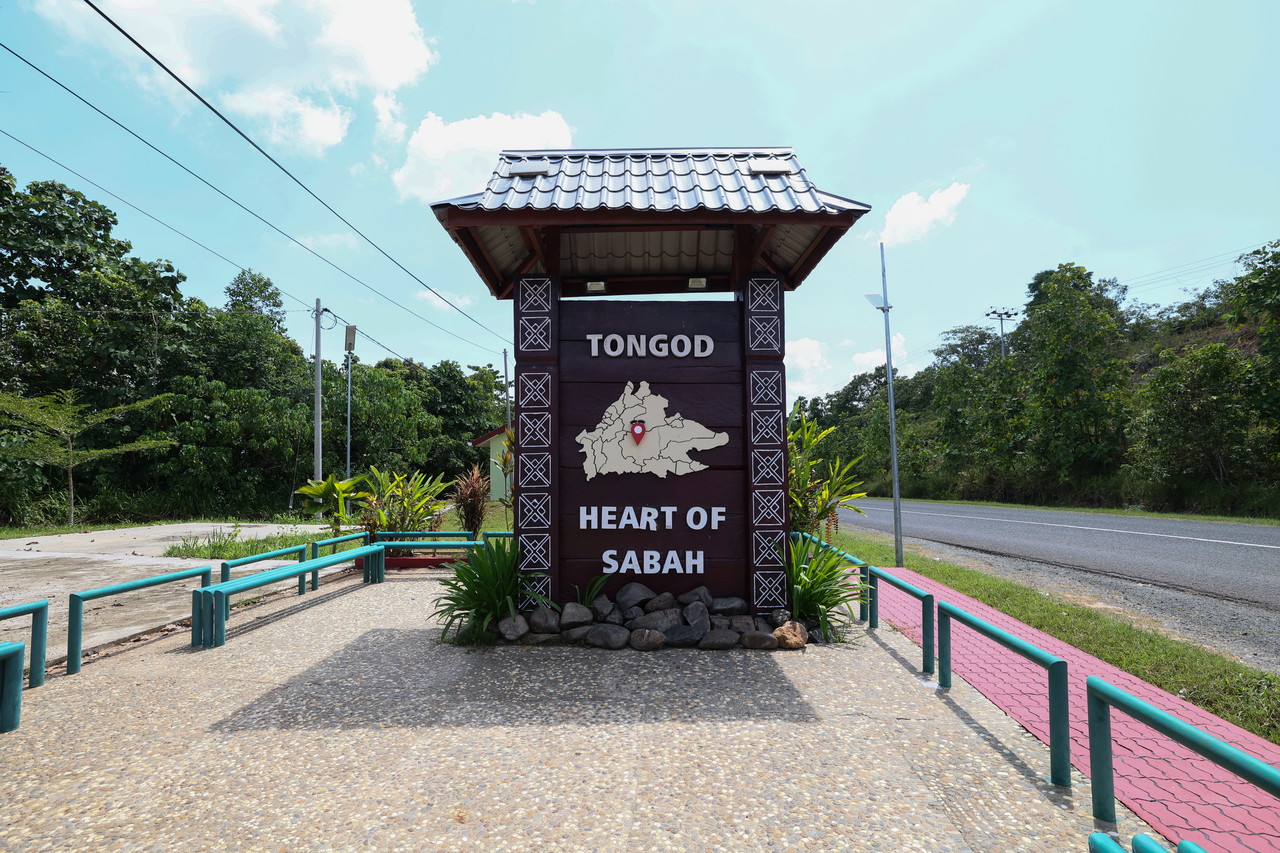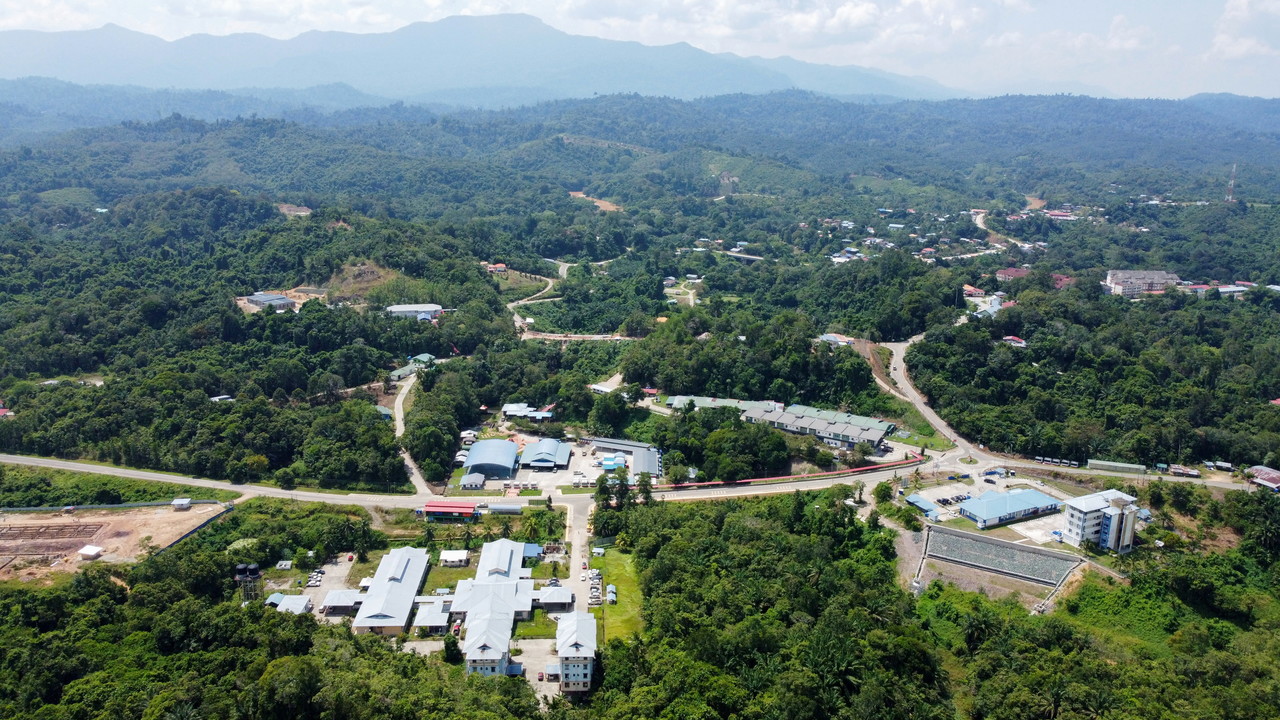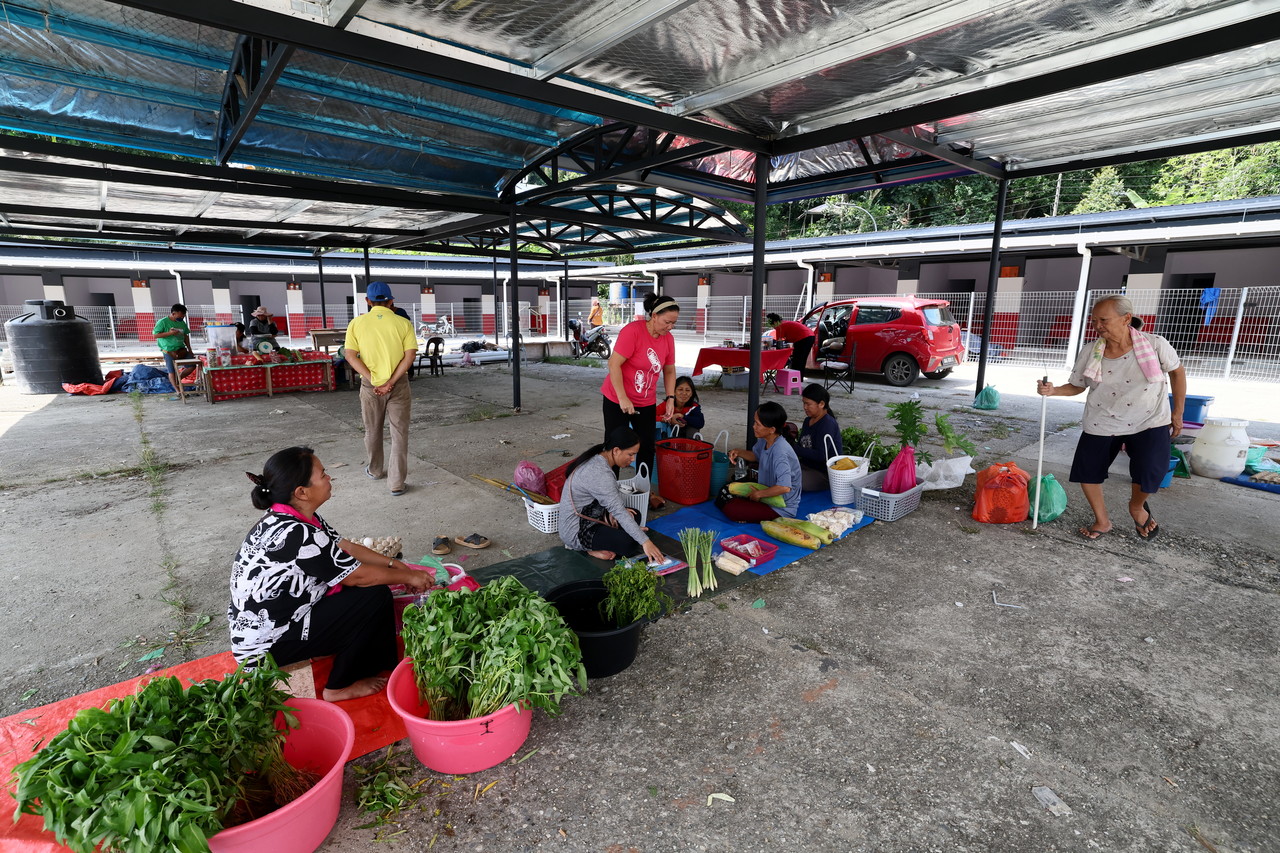Ramzah, who is also former Deputy Vice-Chancellor (Research and Innovation) at Universiti Malaysia Sabah (UMS), said the differing urbanisation demographics between urban and rural areas in Sabah and Peninsular Malaysia contribute to the disparity in poverty demographics.
He explained that the urbanisation rate in Peninsular Malaysia stands at 70 per cent, indicating that 30 per cent of its population resides in rural areas. In contrast, in Sabah, 50 per cent of the population still lives in rural areas.
“But when we talk about the group most affected by poverty—Bumiputera—65 per cent of this group still resides in rural areas of Sabah,” he said.
Touching on the ‘solution theory’ to poverty often seen in Peninsular Malaysia—the migration of rural populations to highly urbanised cities—he said that on the surface, this seems like a good approach, as it could offer greater job opportunities to the individuals involved.
“However, I must stress that Sabah cannot be equated with Peninsular Malaysia. Some suggested following peninsular practices, saying, ‘Those living under trees in the jungle should move to the city.’ This isn’t feasible because nearly 50 per cent of heads of households in poverty in Sabah lack educational qualifications.
“They don’t have certificates needed to secure jobs—not even a Lower Secondary Assessment (PMR) certificate. Moving them to the cities would only compound the issue. This situation arises due to an education gap between Sabah and Peninsular Malaysia,” he added.
According to analyses by Sabah government agencies, of the 9,356 heads of households in extreme poverty surveyed, 42 per cent had no academic qualifications, while only 36 per cent had completed education up to the Primary School Achievement Test (UPSR) or PMR level.
This highlights the critical importance of improving education levels in Sabah as a key pathway to addressing poverty in the state.
ECONOMIC GROWTH ‘POOLS’
Quoting a Chinese proverb, “If you give a man a fish, you feed him for a day; if you teach a man to fish, you feed him for a lifetime,” Ramzah said that addressing poverty in Sabah requires “more than that.”
“Sabah needs both fish and fishing skills, but we also have a critical requirement that may not be as pressing in Peninsular Malaysia—‘pools.’ Poverty is about access to economic opportunities that allow the poor to uplift themselves.
“If they can’t access economic opportunities, we must provide them. This means giving them fishing rods and teaching them how to fish—offering training to seize these opportunities. Sabah needs this too, but in Peninsular Malaysia, access to ‘fishing pools’ is far easier than in Sabah,” he said.
As an example, he noted that Lojing in Kelantan, the poorest district in Peninsular Malaysia, has access to nearby economic growth ‘pools’ such as Ipoh, Perak.
In contrast, Tongod in Sabah, the poorest district in Malaysia, is about six hours away from the nearest economic growth ‘pool’, Kota Kinabalu. Poor transportation infrastructure, including inadequate road conditions, further limits access for the local population.

“This challenge is different. Kota Kinabalu is the only economic growth ‘pool’ available for all of Sabah, unlike Peninsular Malaysia, which has multiple ‘pools’. The distance and poor infrastructure make it very difficult for our residents to access economic opportunities,” he said.
This is further compounded by Sabah’s vast size—73,904 square kilometres (sq km)—making it larger than any other state in Peninsular Malaysia and the second largest state in Malaysia after Sarawak, which spans 124,450 sq km.
This situation, he explained, creates significant economic disparities in Sabah. The T20 group (top 20 per cent of income earners) captures 46.2 per cent of economic opportunities, while the M40 (middle 40 per cent) secures 37 per cent. Alarmingly, the B40 (bottom 40 per cent) only receives 16.8 per cent of these opportunities.
“Economic opportunities are predominantly controlled by the T20 group residing in urban economic ‘pools’, monopolising nearly half of these opportunities.
“In contrast, the B40 group in rural areas has access to less than 20 per cent of economic opportunities, as there are no accessible growth ‘pools.’
“This situation mirrors the Malay proverbs, ‘Si untut juga yang berkutil’ and ‘Yang rebah ditindih,’ meaning ‘The rich keeps getting richer,’ and ‘Those who are already poor become even poorer,’” he said
ECONOMIC ACCESS
Acknowledging the complexity of the issue, particularly in ensuring equitable distribution of Malaysia’s wealth and economic growth across all regions, Ramzah emphasised that prioritising the improvement and expansion of public infrastructure in Sabah—especially roads—is essential.
“This would grant rural and interior communities access to economic growth areas, creating more ‘pools’ across the state, he said.

‘Infrastructure development is possible, but it is a long-term effort. To address this issue, we would need approximately RM50 billion—a substantial amount,’ he added.
However, he noted that the IDS, Sabah has conducted a study aimed at strengthening the grassroots economy in rural and interior Sabah.
“We are creating our own small ‘pools’ in these regions by generating opportunities within the local economic ecosystem. This includes establishing social entrepreneurship initiatives, where local communities can directly benefit from the spillover effects.
“In areas with limited economic growth ‘pools,’ we foster social entrepreneurship. For example, the Batu Lunguyan Handicraft initiative empowers locals to produce traditional craft and sell them across Malaysia and internationally,” he said adding that this project in Keningau has provided economic opportunities to over 60 residents, significantly improving their quality of life.
SABAH BUDGET 2025
The Sabah Budget 2025, unveiled by State Finance Minister Datuk Seri Masidi Manjun during the Sabah State Assembly session on Friday (Nov 15), highlights the state government’s steadfast commitment to tackling poverty.
To provide ‘fish’ for those in need, for the first time, a monthly aid of MYR300 for a year will be allocated to the poor and hardcore poor in the state through this budget, involving an allocation of MYR358.5 million.
As part of its ‘teaching to fish’ approach, the Sabah government has allocated MYR488.5 million to implement various poverty eradication programmes, ensuring no groups are left behind in terms of development, living standards, and economic opportunities.
Among these initiatives, according to Masidi, is a one-time MYR5,000 grant designed to help street vendors with valid business licences enhance their businesses—a first-of-its-kind programme in the state.
Additionally, MYR250 million has been earmarked to construct 3,000 units of Rumah Mesra Sabah Maju Jaya (SMJ) across all 73 state constituencies, representing a 100 per cent increase in allocation compared to the 2024 budget. As of last month, 4,482 Rumah Mesra SMJ units have already been completed.
A total of MYR19.5 million has been allocated for various initiatives, including the Small Development Programme, Facility Preparation and Area Repair Programme, Village Amenities and Economy Programme, Alternative Rural Electricity and Water Supply Programme, and the Additional Economic Activity Programme.
In addition, MYR214 million has been allocated for special allocations and small development projects to build and maintain infrastructure and public facilities throughout Sabah.
These initiatives, aimed at eradicating poverty, focus on strengthening the economy, particularly in rural and interior areas, to empower grassroots communities. This includes efforts to establish localised economic ‘pools’ that foster sustainable growth within these communities.
The Sabah government has also allocated MYR2.6 billion to enhance infrastructure and utilities, focusing on resolving long-standing challenges related to road networks, water and electricity supply, and other public facilities.
These efforts aim to improve access for Sabah residents to economic ‘pools’ in Kota Kinabalu while accelerating the development of additional economic hubs, particularly in Tawau and Sandakan.
FAIR DISTRIBUTION
When asked how the 2025 budget can contribute to the development of the social economy, Ramzah said it is driven by two main pillars: productive growth and fair distribution.
“This is crucial for a marginal state like Sabah. The focus of this budget is not only to grow the state’s economic pie but also to ensure everyone gets their fair share equitably.
He highlighted three key enablers that support these pillars: human capital development, infrastructure improvement, and governance efficiency. “These two pillars are like the steering wheel and wheels guiding us toward our goals, while the three enablers act as the turbo engine powering these efforts,” he added.
The budget, themed ‘Prosperous Sabah, Thriving People,’ places emphasis on both high-level and grassroots economies. This approach is vital for Sabah, which faces significant disparities between urban and rural areas, as well as between the T20 and B40 income groups.
“I won’t specify exact statistics in this budget, but this will ensure that development landscape and prosperity distribution become more inclusive,” he explained.
According to him, this effort is evident in the support for the industrial sector, driven by investments, import & export, and high technology. The 2025 budget also prioritses rural agriculture, community tourism, and industries driven by small and medium enterprises (SMEs).
“All of these initiatives involve local economic drivers within a broader economic ecosystem, which will ultimately strengthen the grassroots economy. I see this budget not as political bait ahead of the state election, but as a genuine effort to develop the state and help the people,” he added.
TRANSFORMING TONGOD
Meanwhile, Kuamut State Assemblyman Datuk Masiung Banah, commenting on the poverty in Tongod—a constituency under his administration—said that he has long raised the issue in state assembly sessions and other platforms, albeit with limited impact. However, Tongod began to gain national attention after being named the poorest district in Malaysia.
“As a representative of the people, I have fought for the development of Tongod for a long time. When it was declared the poorest district, I took it positively, as it drew national attention to our struggle. This recognition ensures that more initiatives will be implemented for us. What matters most is that the people of Tongod receive the support they need,” he said.
Tongod, located 255 km southeast of Kota Kinabalu, is accessible via hilly roads and some severely damaged routes, crossing varying elevations around Mount Kinabalu and the Ranau district. Covering an area of 10,052 sq km, Tongod is larger than several states in Peninsular Malaysia, including Kedah, which spans 9,447 sq km.

Masiung, who also serves as Chairman of the Housing and Town Development Board (LPPB), noted that in April, Chief Minister Datuk Seri Hajiji Noor inaugurated the construction of a clinker and cement plant in the area, with an investment of MYR1.2 billion.
“The plant, expected to be completed by the end of the year, will provide over 1,000 job opportunities and bring economic benefits to nearby traders.
“This project is one way to address poverty in Tongod by creating sustainable employment opportunities,” he said, adding that families of the hardcore poor would be given priority for these jobs.
He also emphasised agriculture as a key strategy for lifting Tongod out of poverty. A 1,618.74-hectare area has been set aside for upland rice cultivation in collaboration with local farmers.
He said Sabah’s self-sufficiency rate (SSR) for rice is currently around 22.8 per cent, presenting significant potential for Tongod to emerge as one of the main rice producers in the state. Support from various government agencies will be crucial to the success of this project.
“The town of Tongod is also undergoing development, including plans for a RM7 million commercial centre with shop lots led by LPPB, along with other major development projects in the area.
“With initiatives ranging from commercial development to large factories and rice cultivation, Tongod is now on a path of transformation,” he said.
In a nutshell, addressing the deeply rooted issue of poverty requires serious attention from all parties.
Once a remote district often overlooked, Tongod has now become a symbol of hope for the development of rural and interior communities in Sabah, paving the way for a more prosperous future that its residents have long dreamed of.




